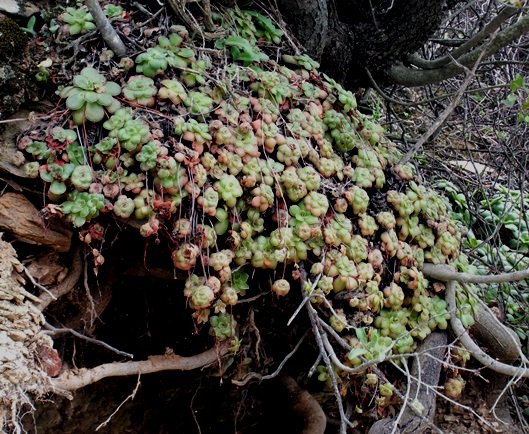Crassula orbicularis living dangerously

Dangling over the edge like lemmings on leashes, these Crassula orbicularis rosettes are vitally attached to their relatives. Not emotionally as far as we know, but via stolons that act as lifelines for as long as they live or until they become rooted independently. Rooting has taken place for some of the rosettes appearing markedly healthier.
The bad luck of hanging over the edge in a succulent curtain, means that some of them may never reach the rooted phase. Unless the stolon breaks and the rosette(s) fall, also landing right side up and in spots where there isn’t clean rock only.
Life can be so organised and predictably patterned that people forget how many boxes must be ticked of things going right for anything to stay alive for its natural lifespan. The combined probabilities of a normal life are frighteningly low for all species in the naturally proceeding contingency carnival.
Improving those chances, only for humanity in a complex process called civilisation, has to some extent become possible because our species has brains, languages and no end of brainy or hairbrained plans.
The environmental modifications to sustain these improvements for humans bear astronomical costs in impact on the earth’s resources and on all the other species. These costs climb continually as humanity is slow in dealing with the unintended consequences of its actions.
This inability of coordinating efforts is caused more by selfishness than by the language differences among people, suspected to be the cause long ago during the times of Babel (Smith, et al, 2017; Vlok and Schutte-Vlok, 2015).

